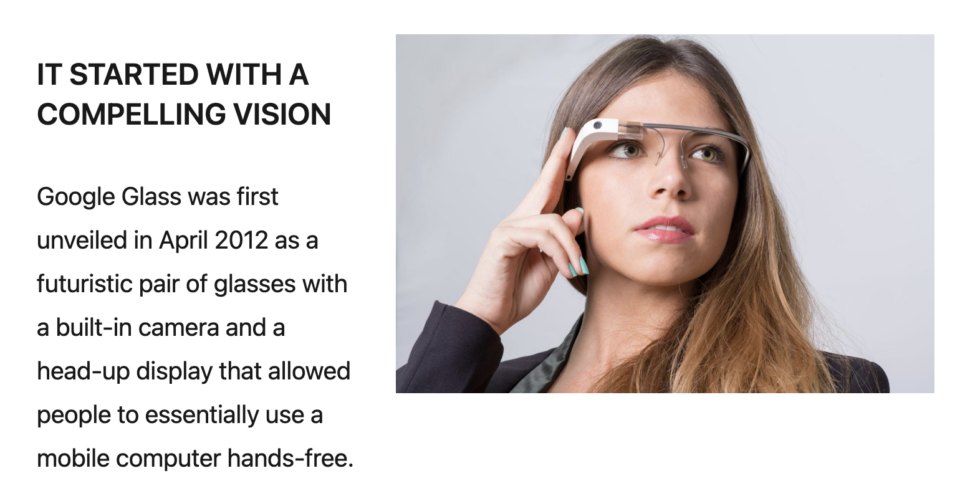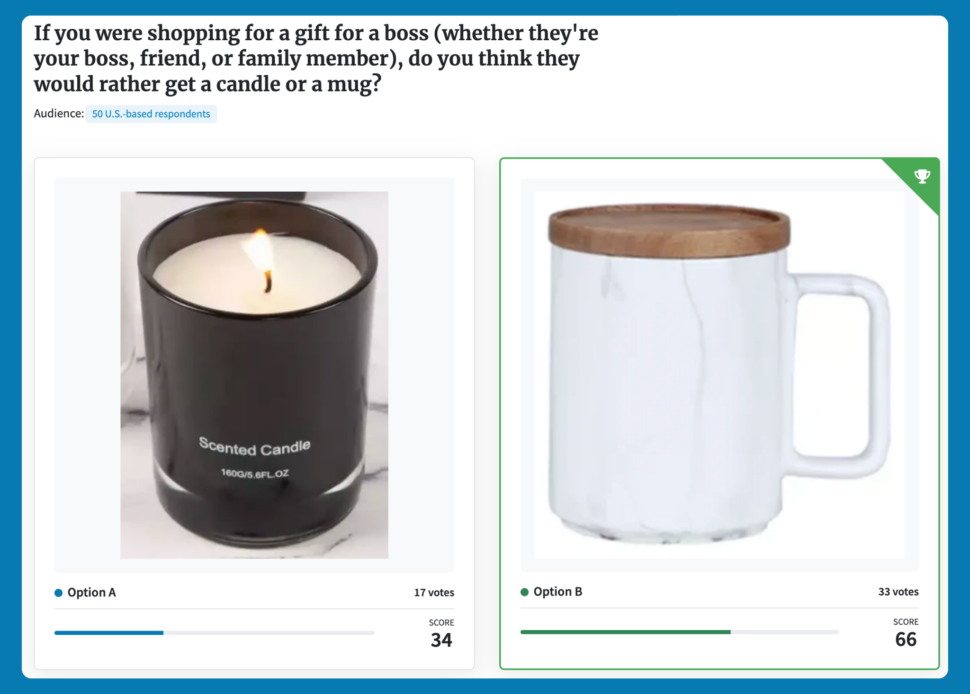Market validation is how businesses and product designers find out what their target market will think of their product. In essence, it’s how you determine if your product concept is worth developing further and ultimately taking to market.
There are many famous examples of product ideas that failed. Google Glass is one. People’s unwillingness to wear the device for aesthetic reasons, coupled with its high price tag and small feature list, led people to shy away from it. This could have been prevented with more awareness of what Google’s target audience desired.
In another example, Dinnr (a service where people could get pre-measured ingredients and instructions delivered to their door so they could cook easily) didn’t have a good product-market fit, and quickly failed. However, Hello Fresh, which has a similar goal, business model, and the same audience, was able to succeed.
Why? The main reason for Hello Fresh’s success and Dinnr’s failure was market validation. Hello Fresh tailored their product, pricing, and marketing based on thorough audience and market research.
In this blog, we’ll cover why market validation is critical for your business’ success and how you can conduct your own market research. Let’s dive in!
Why market validation matters
It’s important to validate any product, tool, or feature early in the development process to save money and time in the long run. Validating your product with your target audience ensures you’ll have a better chance of success when you do go to market.
If you don’t have some idea of what your potential customers will think about your product before you launch, you’re flying blind – which can lead to costly mistakes.
Other benefits of market validation include:
- Assessing product-market fit: product-market fit is how well your solution meshes with the needs in the marketplace. Even ideas that are great at a superficial level might lose market fit for unexpected reasons. Airbnb used a landing page to verify it’s product-market fit before launching the now household name.
- Attracting investment funding: getting your idea off the ground takes capital. Capital investment groups will ask for your market validation assessment before they proceed. Investors, especially angel seed investors from major venture capital firms, ask for this step before they look at your proposal.
- Giving you new consumer insights: responses from your validation group might raise tweaks or changes to your product that make it more successful. In this sample validation survey, users mentioned that they need a product which isn’t too different from the workflows they already had in place. This surprising insight hints at a more conventional layout.
At the end of the day, market validation and research is a crucial part of any product development process, and its benefits can be wide-reaching.
Types of market validation
There are many different types of market validation. The most common one, and the main focus of this article, is verifying a product’s usefulness and market fit.
The key types of idea validation testing include:
- Product validation
- Market fit validation
- Price validation
One closely related step in the product development process is competitive analysis, where you analyze the landscape (who your competitors are) and make sure that your offering will stand out in your segment. You might produce a competitive analysis report that includes:
- A list of existing products
- Pricing and marketing details
- Customer or revenue numbers
- Common complaints found in reviews
Competitive analysis is typically done either before or alongside market validation. This way, you’ll have a better idea of the existing gaps and opportunities in the market that you can take advantage of.
Preparing for market validation
Before you embark on your market research journey, you need to put together a plan. You will likely have a set of assumptions or beliefs that led to your product idea. Write those down and try to distill your idea into one, clear hypothesis. Describe your offering in one or two sentences.
To do this, you should ask yourself:
- Who is this product for?
- What does this product do?
- Where will I deploy this product?
- What alternatives exist in the marketplace, and why is mine better?
It’s important to build a set of customer or user personas who you want to get feedback from, so that you’re reaching a relevant audience throughout the research process.
Tools like PickFu come in handy when you need audience feedback. PickFu’s built-in panel has more than 15 million consumers globally, which you can target with 90+ demographic traits (location, age, gender, interests, and more). Savvy market researchers will know exactly who among that panel they want to hear from.
Knowing what the marketplace already has will help you separate your solution and make it more compelling.
Asking the right questions
You should also thoughtfully prepare the questions you’ll ask during your market and consumer research process. To start, make sure to present your product or solution idea in a specific, easy-to-understand way. This is where your hypothesis or main product statement comes in handy.
The types of questions you ask should be specific too, intended to solicit one clear answer. Asking “Would you be interested in this product?” is vague and could generate false positives. Better questions might include:
- “Would this solution solve a pain point you have?”
- “What frustrations do you have when trying to perform X task?”
- “Would you pay for a solution that does [x], and if so, how much?”
- “What would make you use this tool versus a competitor?”
Questions like this are direct, give clear, tangible answers, and also invite further detailed insights.
When to do market validation tests
The best time to validate your product idea is as early as possible in the development cycle, and throughout the product design process leading up to launch.
Post-launch, you should also conduct market research when you’re expanding into new markets, rolling out new features, or changing your pricing structure.
For example, if you have an idea for an app, it’s obvious that you’d validate the market for that app before you develop it. You should redo that market validation when it’s time to launch the same app overseas, since different countries and cultures can have very different needs and perceptions.
This is true of any product. New markets have nuances and quirks that make it important to get local insight. Your product validation should seek to tease out cultural differences or market variances that change the product-market fit for your offering.
If you’re adding new features, you should retest not only the current user base, but also the target audience for those features to see if they’ll be effective. Often, new features help you attract your customers – use market validation techniques to make sure your new feature will achieve that aim.
Market validation methods
As with any type of market research, you can come at market validation from a few different angles. You can:
- Ask for feedback
- Use keyword data to identify trends
- Create landing pages to promote your idea and capture interest
- Launch a pre-sales or pre-order campaign
- Prototype your offering
- Perform user testing
All of these are important, and you should use a combination based on what makes sense for your business. But above all, don’t skip the step of getting direct, qualitative feedback from your target audience.
Direct market validation
Going direct to the public is a powerful tool in your market validation arsenal. You can do this with in-person programs like focus groups, but these are often expensive, time-consuming, and give you only a narrow customer base.
Online survey tools and customer insights platforms like PickFu make it easy to rapidly obtain market validation data from a wide range of people from your intended user group. We even have survey templates for market validation to make it easier for product designers to start the process in just a few clicks.
The insights you get from these types of market surveys are often surprising – especially when you’re polling an international audience.
In this example product validation poll about a new car cup holder solution, we asked users from Australia to tell us their thoughts on the product. Stick-shift or standard gearboxes are more common in that country than in the U.S., so this comment from a respondent – “My only concerns would be 1. Would it fit my car’s cup holder 2. Would it get in the way of my gear knob” – was a nuanced observation we might not see from a purely American audience.
By asking an open-ended question, you’ll get a quick and easy reference point for how popular your idea might be. Adding a star rating is something you can record and track in future rounds of testing, to see if your audience responded well to any changes you made or not.
PickFu’s artificial intelligence (AI) powered summary of the survey responses helps businesses distill actionable insights faster:
“Based on the survey responses, it would be valuable to further investigate hypotheses related to product design and functionality. For instance, testing different prototypes that cater to various cup holder sizes could help determine the ideal dimensions for maximum compatibility across different vehicles. Additionally, exploring pricing strategies that align with consumer willingness to pay could provide insights into market acceptance and purchase intent. Further research could also delve into preferences regarding materials used in manufacturing the product to ensure durability and sturdiness as key factors influencing buying decisions.”
Getting feedback directly from your ideal customers is the best way to get real-world insight into your product offering. These sorts of insights can help guide your development process and demonstrate the viability of your offering.
There are other tools you can use alongside surveys to enhance your market validation process, which we’ll cover below.
Use keyword data to identify trends
Adapting search engine optimization (SEO) tools and procedures to help with market validation is another common practice. You can use tools like SEMRush and ahrefs along to see what the key search terms in your industry are.
If you apply those words to tools like Google Trends you’ll be able to see how they’re used by region or demographic, and that can help ascertain the market size and appetite for your idea.
For example, an increase in searches for terms like “online editing tool” might validate the demand for that kind of product. Similarly, people might search for an adjective like “synchronised” next to common industry terms like “project manager” – which validates your idea for a sync-up feature in your software.
Create landing pages to promote your idea and capture expressions of interest
You might even use those keywords to try and capture attention by building a landing page for your concept. Visitors who are searching those terms you identified in your SEO research will visit your page and you can invite them to register interest or to sign up for your updates. You may even use this group to help perform some direct consumer research or surveys.
Launch a pre-sales or pre-orders campaign
One step further than a landing page is a pre-sales or pre-orders campaign. You can use tools like GoFundMe or Kickstarter for this, or simply launch a pre-sales campaign through a website.
The huge positive of this market validation technique is that it gives you real-world insights, and real-world capital funds to launch your product. This is more than just a question of “would you spend money” – it asks your potential customers to fork over their cash immediately.
The risk here is that your pre-sales will flop and you won’t get any information or insight as to why. That’s why a pre-sales or pre-order program is something you should only do at the end of your market validation process, and only in concert with surveys or other tools.
Prototyping and user testing
At the tail end of your development process you can validate your offering with quick and easy user testing.
You might start by launching a minimum viable product (MVP) based on insights you’ve already gleaned from other aspects of your validation testing. An MVP contains all the key functions of your product that make it viable for use, often pared back or stripped down of the final features or flourishes.
An MVP is a type of prototype testing. In both instances, you’ll be able to have real users test and play with your product to see if it works. If you’re providing a software as a service (SAAS) tool or app, user experience (UX) testing is part of this process.
When you let real-world users validate SaaS ideas by exploring the actual workings of your concept you’ll gain insights into how it fits the market, where it betters the competition, and any bugs or drawbacks that you should tweak before launch.
Use real people to complete your market validation
At every phase of your market validation journey, it’s important to get qualitative insights from real people in your target customer base.
When you take a new product concept directly to your target market with customer interviews and surveys, you’ll get valuable intel into how your product will perform – allowing you to get ahead and launch the best version of your solution.
Along with the other tips and guidelines mentioned above, PickFu is a great way to validate your concept, understand customer needs, and assess the likely market demand.
Sign up today to reach your ideal customers and get fast feedback on your product!
Market validation FAQs
What is an example of market validation?
Let’s say you have an idea for a new app feature that uses AI to read receipts and automatically fill out an expense report. You could survey managers to ask how much they’d pay for this feature.
That will help you determine the value proposition of your new feature idea. If 1,000 respondents say “I would pay $10 per month per seat to use this feature” and you know it will cost $5,000 to develop it, you’ve successfully validated the market for this idea.
Why do startups need market validation?
Every product should go through a market validation process. Entrepreneurs who want to gain capital investment will need to show their market validation testing and results to potential partners in their startup idea. If you’re entering a funding round for a new concept and it hasn’t been validated, it will be harder to attract capital investment.
How do you validate a marketplace idea?
You can validate a marketplace idea by conducting interviews and surveys with your intended audience, assessing the current competitive landscape, launching a pre-sales campaign, and usability testing. A wide variety of market research tools can help you do market research for apps or campaigns alike. The most powerful validation will come from your target customers, usually through surveys or focus panels.






